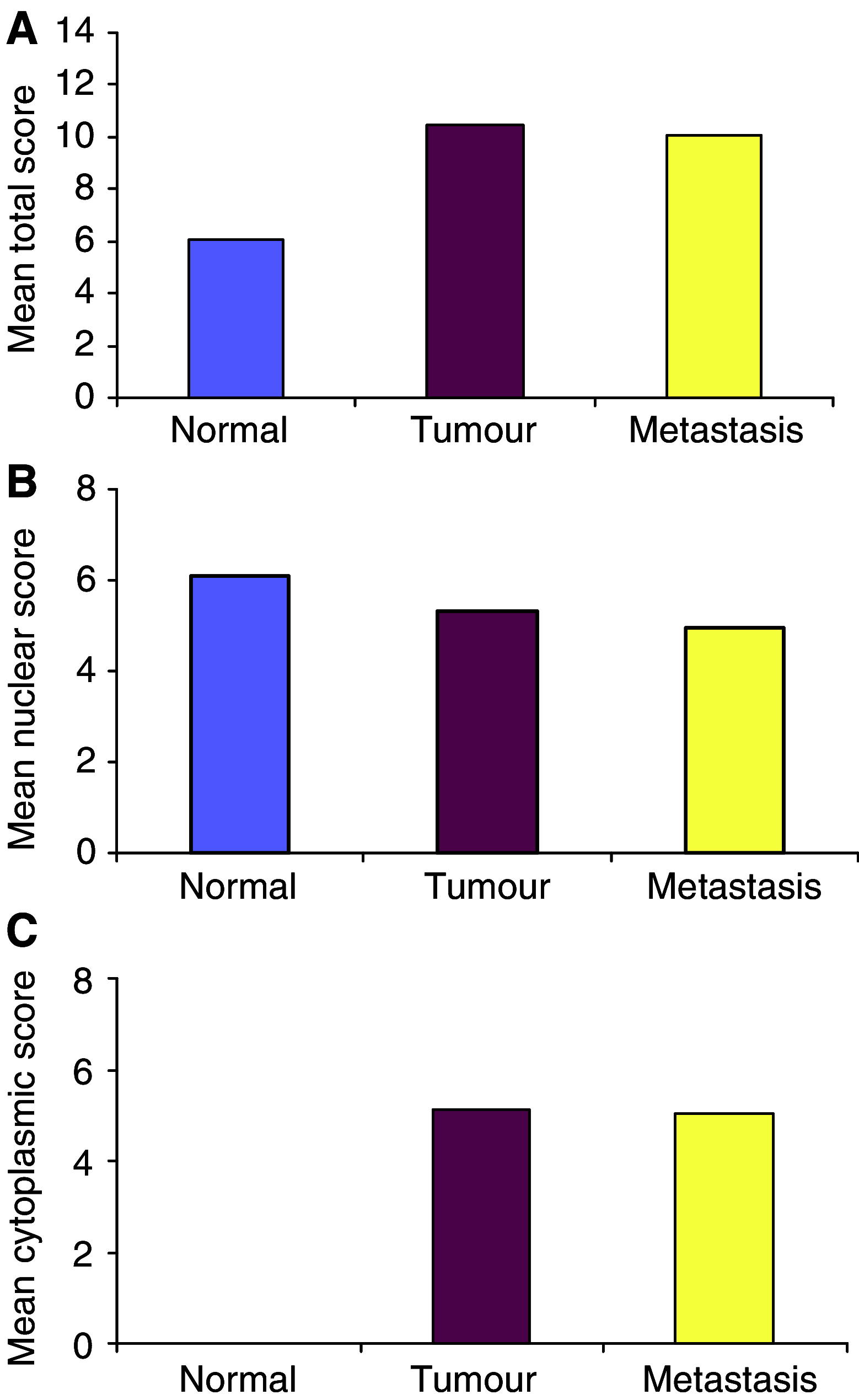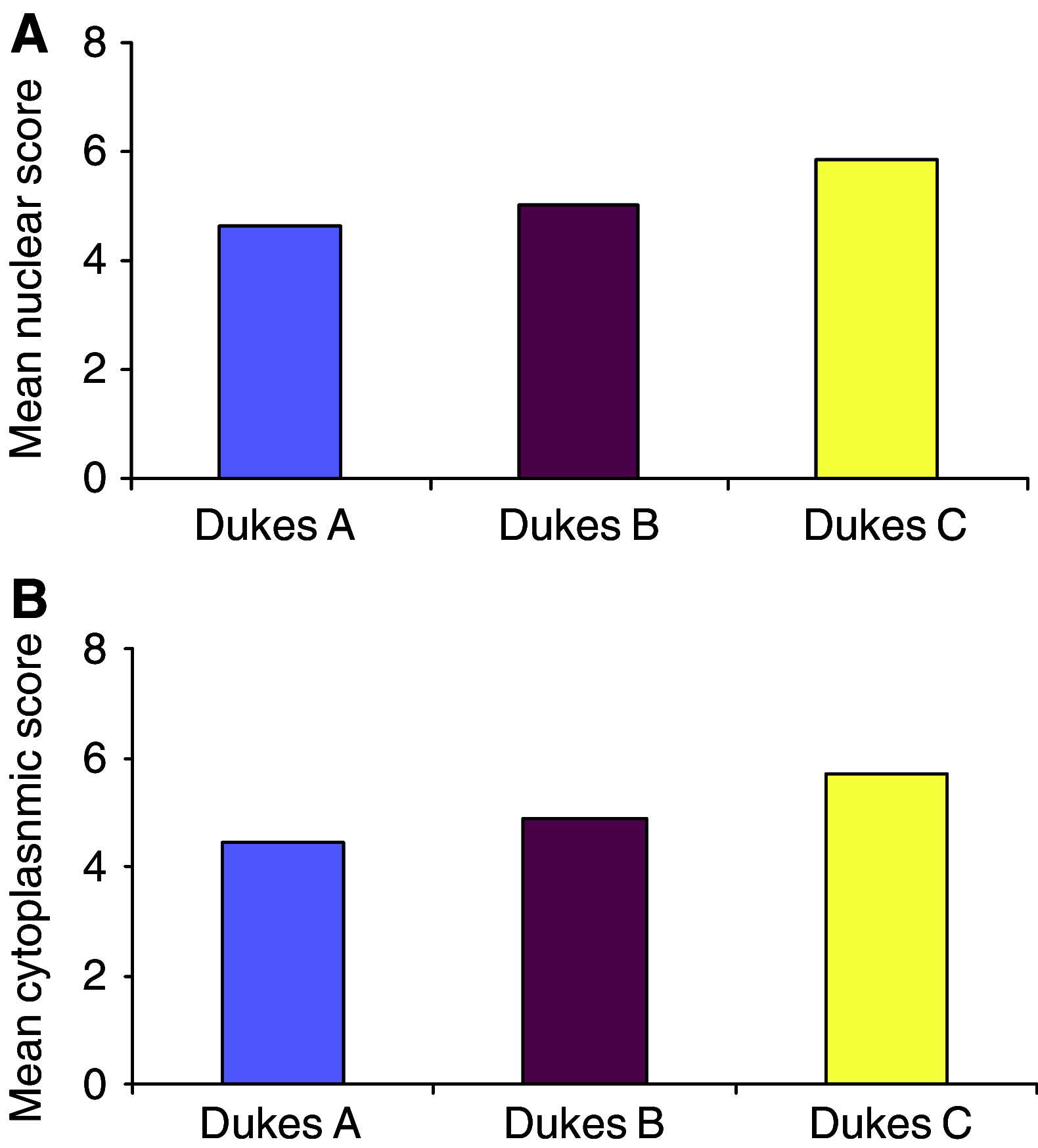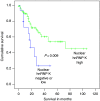Heterogeneous nuclear ribonucleoprotein K is over expressed, aberrantly localised and is associated with poor prognosis in colorectal cancer
- PMID: 16953238
- PMCID: PMC2360539
- DOI: 10.1038/sj.bjc.6603349
Heterogeneous nuclear ribonucleoprotein K is over expressed, aberrantly localised and is associated with poor prognosis in colorectal cancer
Abstract
Heterogeneous ribonucleoprotein K (hnRNP K) is a member of the hnRNP family which has several different cellular roles including transcription, mRNA shuttling, RNA editing and translation. Several reports implicate hnRNP K having a role in tumorigenesis, for instance hnRNP K increases transcription of the oncogene c-myc and hnRNP K expression is regulated by the p53/MDM 2 pathway. In this study comparing normal colon to colorectal cancer by proteomics, hnRNP K was identified as being overexpressed in this type of cancer. Immunohistochemistry with a monoclonal antibody to hnRNP K (which we developed) on colorectal cancer tissue microarray, confirmed that hnRNP K was overexpressed in colorectal cancer (P<0.001) and also showed that hnRNP K had an aberrant subcellular localisation in cancer cells. In normal colon hnRNP K was exclusively nuclear whereas in colorectal cancer the protein localised both in the cytoplasm and the nucleus. There were significant increases in both nuclear (P=0.007) and cytoplasmic (P=0.001) expression of hnRNP K in Dukes C tumours compared with early stage tumours. In Dukes C patient's good survival was associated with increased hnRNP K nuclear expression (P=0.0093). To elaborate on the recent observation that hnRNP K is regulated by p53, the expression profiles of these two proteins were also analysed. There was no correlation between hnRNP K and p53 expression, however, patients who presented tumours that were positive for hnRNP K and p53 had a poorer survival outcome (P=0.045).
Figures







Comment in
-
Evidence for heterogeneous nuclear ribonucleoprotein K overexpression in oral squamous cell carcinoma.Br J Cancer. 2007 Aug 20;97(4):574-5; author reply 576. doi: 10.1038/sj.bjc.6603911. Epub 2007 Jul 31. Br J Cancer. 2007. PMID: 17667925 Free PMC article. No abstract available.
References
-
- Bomsztyk K, Denisenko O, Ostrowski J (2004) HnRNP K: one protein multiple processes. Bioessays 26: 629–638 - PubMed
-
- Bomsztyk K, Van Seuningen I, Suzuki H, Denisenko O, Ostrowski J (1997) Diverse molecular interactions of the hnRNP K protein. FEBS Lett 403: 113–115 - PubMed
-
- Carpenter B, Mackay C, Alnabulsi A, Mackay M, Telfer C, Melvin WT, Murray GI (2006) The roles of heterogeneous nuclear ribonucleoproteins in tumour development and progression. Biochim Biophys Acta 1765(2): 85–100 - PubMed
Publication types
MeSH terms
Substances
LinkOut - more resources
Full Text Sources
Other Literature Sources
Medical
Research Materials
Miscellaneous

